What is Numerology
"Diversity is an artificial condition, which is not permanent nor real, but only apparent. Whereas unity is a natural and eternal condition, real though not apparent. But through the philosophical study of numbers, the reality of unity can be mathematically demonstrated, and the unreality of diversity can be mathematically demonstrated. And in this way, appeal to certain minds so constituted that they are naturally inclined to accept upon this level."
Numerology is the study of numbers and their influence on our daily lives. By interpreting these numerical patterns, we can uncover insights about the world, ourselves, and others. It is a profound language of numbers that reveals hidden meanings, guiding us toward deeper understanding.
While numerology may seem complex due to its various systems and methods, its principles share similarities with astrology. Both fields explore the connections between cosmic forces and human experiences, though they use different approaches to derive insights. Numerology teaches us that everything in the universe is governed by numbers, offering a unique perspective on personality, destiny, and life’s purpose.
A numerologist analyzes key aspects of a person’s life - such as their name and birth date - and breaks them down into significant numbers. These calculations reveal core numbers like the Life Path Number, Expression Number, and Heart’s Desire Number, each providing valuable knowledge about personality traits, strengths, challenges, and life’s greater purpose.
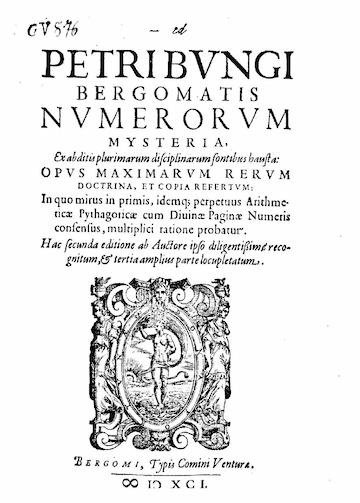
Numerorum mysteria (1591), a treatise on numerology by Pietro Bongo and his most influential work in Europe (source: commons.wikimedia.org)
The Mystical Journey of Numerology: From Ancient Wisdom to Modern Practice
Numerology, the study of numbers' mystical significance, represents one of humanity's oldest attempts to find meaning and order in the universe. Across civilizations and millennia, numbers have been revered not merely as mathematical tools but as sacred symbols holding the keys to understanding cosmic truths and human destiny. This enduring fascination with numerical patterns has woven through cultures, religions, and philosophical traditions, evolving into the diverse systems we recognize today.
Ancient Foundations of Numerical Mysticism
The earliest roots of numerology reveal fascinating connections between mathematics and mysticism across ancient civilizations. In Mesopotamia, Babylonian astrologers developed sophisticated numerical systems as early as 2300 BCE, creating the foundation for numerical divination. The first documented use of gematria appears in an 8th century BCE Assyrian inscription commissioned by King Sargon II, who declared: "the king built the wall of Khorsabad 16,283 cubits long to correspond with the numerical value of his name." This remarkable statement provides concrete evidence that ancient rulers consciously incorporated numerical symbolism into monumental architecture.
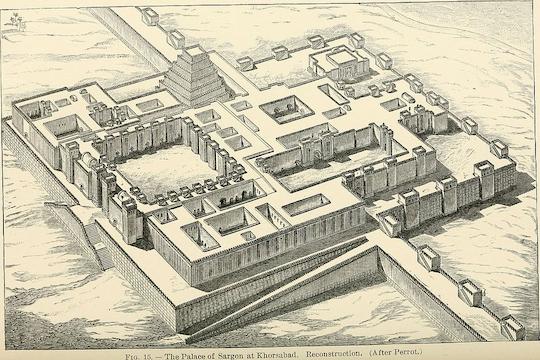
1905 reconstruction of Sargon's palace (source: commons.wikimedia.org)
The Chaldeans perfected these early numerical systems, establishing intricate methods that would influence later Greek and Hebrew traditions. Egyptian priests meanwhile encoded sacred numerical ratios into their monumental architecture, believing certain proportions held divine power - a philosophy evident in the precise measurements of the Great Pyramid, where mathematical relationships were thought to connect earthly structures with cosmic order.
The practice of isopsephy (from Greek "isos" meaning equal and "psephos" meaning pebble/count) emerged as a particularly sophisticated form of numerology in ancient Greece. This system assigned numerical values to Greek letters, allowing words and names to be analyzed through their numerical equivalents. A parallel development occurred in Hebrew culture with gematria, building upon earlier Mesopotamian concepts. Hebrew scholars discovered profound connections by calculating numerical values of words in sacred texts - for instance, the word for "life" (חי) sums to 18, making this number especially significant in Jewish tradition. These letter-number systems revealed hidden patterns and relationships that ordinary language couldn't express, offering what practitioners believed were glimpses into divine truths.
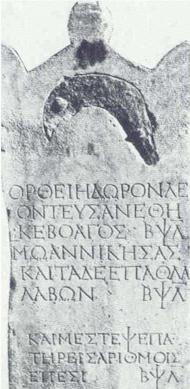
Example of isopsephy from the Sanctuary of Artemis Orthia, 2nd century AD (source: commons.wikimedia.org)
Similar numerical philosophies appeared independently across cultures. India's Vedic texts developed complex numerical symbolism, while China's I Ching used numerical patterns to interpret cosmic principles. These diverse traditions all shared a fundamental belief: numbers weren't merely quantities, but living symbols containing profound spiritual meaning. From Sargon II's architectural numerology to Egyptian pyramid builders and Vedic mathematicians, humanity's earliest civilizations all recognized numbers as holding the keys to understanding both the cosmos and human destiny.
Pythagoras and the Birth of Western Numerology
The ancient Greek philosopher Pythagoras (570–495 BCE) stands as the foundational figure of Western numerology, transforming numerical mysticism into a structured philosophical system. His famous proclamation - "All things are numbers" - encapsulated his revolutionary belief that numbers were not merely abstract symbols but the very essence of reality, governing the harmonies of the cosmos, the patterns of nature, and even the human soul.
Pythagoras established core principles that continue to shape modern numerology. Among his most enduring contributions was the concept that each single-digit number (1 through 9) possesses a unique vibrational quality, influencing both the material and spiritual realms. He also introduced the practice of numerical reduction, whereby complex numbers are simplified to their root digits (e.g., 15 becomes 1 + 5 = 6), revealing their underlying energetic significance. These ideas formed the basis for later numerological systems, from classical antiquity to contemporary esoteric traditions.
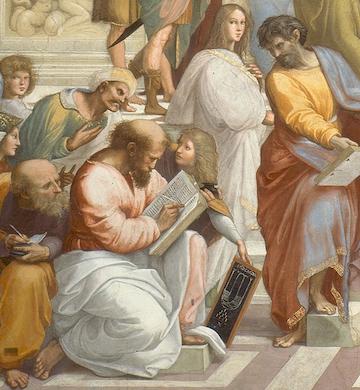
Cropped image of Pythagoras from Raphael's School of Athens (source: commons.wikimedia.org)
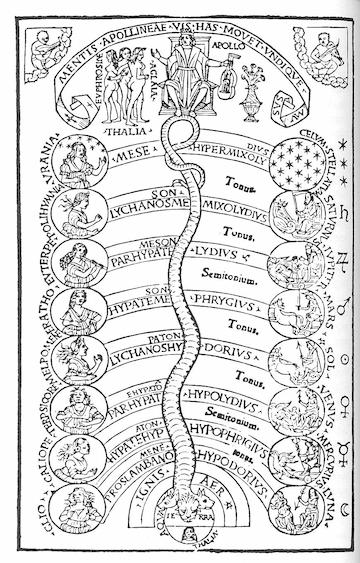
Renaissance engraving (Gafurius's Practica musice, 1496) showing Apollo, the Muses, the planetary spheres and musical modes (source: commons.wikimedia.org)
Beyond numerology, Pythagoras and his secretive school in Croton (southern Italy) explored the profound intersections of mathematics, music, and metaphysics. His discovery of the Pythagorean theorem (though likely borrowed from earlier Babylonian mathematicians) demonstrated the deep relationship between geometry and numerical ratios. Even more strikingly, his experiments with vibrating strings led to the revelation that musical intervals correspond to simple whole-number ratios - a principle known as harmonics or the "music of the spheres." To Pythagoras, this proved that the universe itself was ordered through mathematical perfection, with celestial bodies moving in divine, inaudible harmonies.
However, Pythagoreanism faced fierce political and social opposition. The school’s secretive rituals, vegetarianism, and radical teachings on reincarnation and equality provoked suspicion. After a violent uprising in Croton, Pythagoras was forced into exile, and his followers were persecuted. Despite this suppression, his ideas endured through Neoplatonists like Iamblichus and Plotinus, who preserved and expanded upon his numerical philosophy. Medieval scholars, Renaissance magi (such as Marsilio Ficino), and even early modern scientists like Johannes Kepler further propagated Pythagorean concepts, ensuring their survival into the modern era.
Today, Pythagoras’s legacy lives on not only in mathematics and music theory but also in the spiritual practice of numerology. His vision of a universe woven from numerical patterns continues to inspire seekers of esoteric wisdom, bridging the ancient and modern worlds in the timeless quest to decode the hidden language of numbers.
Numerology in World Religions
Numerology - the study of the mystical significance of numbers - became deeply embedded in the spiritual and philosophical frameworks of diverse religious traditions. Across cultures, numbers were viewed not merely as mathematical tools but as sacred symbols carrying divine meaning, offering insights into the hidden order of the universe.
In Jewish mysticism, the practice of gematria emerged as a sophisticated method for interpreting the Torah. By assigning numerical values to Hebrew letters, scholars and Kabbalists uncovered hidden layers of meaning within sacred texts, believing that God had encoded deeper truths within the numerical structure of scripture. This tradition reinforced the idea that numbers were a fundamental part of divine communication, bridging the earthly and the spiritual realms.
Christian theology also engaged with numerology, though its reception was more ambivalent. Early Church Fathers, such as Augustine of Hippo, regarded numbers as part of God’s divine language, using numerical patterns to explore theological concepts like the Trinity (3) and the perfection of creation (7). However, as the Church grew more institutionalized, many authorities condemned numerological practices, associating them with divination or occultism. Despite this, symbolic numbers persisted in Christian thought - such as the 12 apostles mirroring the 12 tribes of Israel - demonstrating numerology’s enduring, if contested, role in biblical interpretation.
"The number seven is good, but we do not explain it after the doctrine of Pythagoras and the other philosophers, but rather according to the manifestation and division of the grace of the Spirit; for the prophet Isaias has enumerated the principal gifts of the Holy Spirit as seven."
In the Islamic world, attitudes toward numerology varied between mystical and orthodox circles. Sufi mystics embraced numerical symbolism, particularly through the science of ‘ilm al-hurūf (the study of letters and their numerical values, also called Islamic letterism), which they used to contemplate the mysteries of the Qur’an and the divine names of Allah. Meanwhile, mainstream Islamic scholars often rejected such practices, cautioning against esoteric interpretations that deviated from orthodox exegesis. Nevertheless, numerical symbolism subtly influenced Islamic art, architecture, and even calendar systems, reflecting a cultural appreciation for sacred geometry.
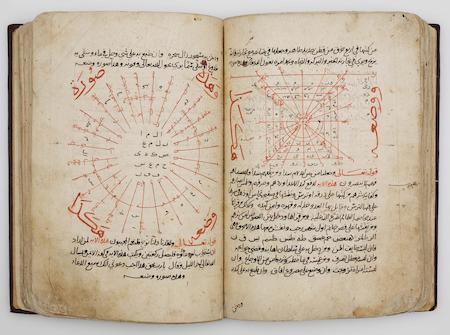
Al-Buni's Treatise on the Magical Uses of the Ninety-nine Names of God (source: commons.wikimedia.org)
Eastern spiritual traditions similarly integrated numerology into their metaphysical systems. In Hinduism, numbers held cosmological significance - for instance, the number 108 became sacred in prayer beads, temple architecture, and Vedic astrology, symbolizing the universe's completeness. Taoist philosophy also employed numerical symbolism, particularly in the I Ching (Book of Changes), where hexagrams and trigrams encoded cosmic principles through numerical patterns. These traditions underscored numerology’s universal appeal as a means of deciphering the hidden harmony between the material and spiritual worlds.
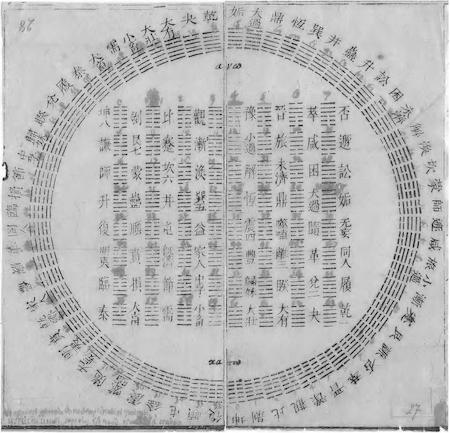
A diagram of I Ching hexagrams sent to Gottfried Wilhelm Leibniz from Joachim Bouvet. (source: commons.wikimedia.org)
Thus, across Judaism, Christianity, Islam, Hinduism, and Taoism, numerology served as a bridge between human understanding and divine mystery. While its acceptance fluctuated - sometimes revered, sometimes suppressed - its persistence highlights humanity’s enduring fascination with numbers as keys to unlocking the sacred.
Renaissance Revival and Modern Evolution
The European Renaissance (14th–17th centuries) marked a pivotal revival of numerological thought, as scholars rediscovered and reinterpreted the ancient numerical wisdom of Pythagoras, the Kabbalah, and Hermetic traditions. This era, flourishing at the crossroads of mysticism and early science, saw polymaths like Heinrich Cornelius Agrippa, Marsilio Ficino, and Johannes Reuchlin weave numerology into their philosophical and theological frameworks. Agrippa’s De Occulta Philosophia (1533) synthesized Pythagorean mathematics, Kabbalistic gematria, and astrological symbolism into a unified system of esoteric knowledge. Meanwhile, Ficino’s translations of Hermetic texts and Reuchlin’s studies of Hebrew numerology (gematria) reinforced the idea that numbers held divine keys to cosmic and personal enlightenment.
Despite the Inquisition’s suppression of “occult” practices, Renaissance numerology persisted in coded forms - hidden in art (like Dürer’s magic squares), architecture (sacred geometry in cathedrals), and even early scientific works. This period served as a crucial bridge, ensuring that ancient numerical traditions survived into the Enlightenment, where they influenced thinkers like Kepler and Newton, who sought mathematical order in the cosmos.
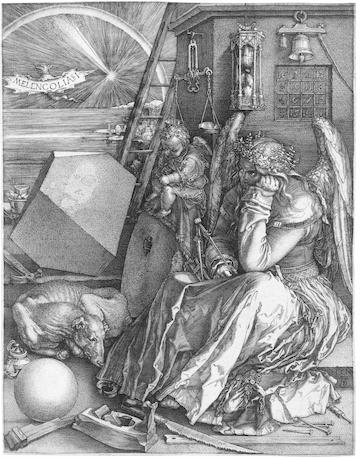
Melencolia I (Albrecht Dürer, 1514) includes an order 4 square with magic sum 34 (source: commons.wikimedia.org)
By the early 1900s, numerology underwent a dramatic shift - from a scholarly esoteric practice to a tool for self-discovery and personal growth. Pioneers like L. Dow Balliett (author of The Science of Numerology, 1917) reframed numerical vibrations as a means of understanding personality and life purpose, blending Pythagorean principles with early psychology. Dr. Juno Jordan, a mathematician and mystic, further systematized modern numerology in the 1960s, introducing methods like Life Path Numbers and Destiny Numbers, which remain staples of contemporary practice.
This democratization of numerology mirrored broader cultural movements, from Theosophy’s spiritual revival to the New Age wave of the 1970s–80s. No longer confined to secret societies, numerology became accessible through mass-market books, workshops, and even newspaper horoscopes.
In the digital age, numerology has evolved into a vibrant and surprisingly widespread tradition, finding new expressions across diverse fields. Within psychology and self-help, therapists and life coaches now incorporate core numerological concepts - such as Expression Numbers and Soul Urge Numbers - as tools for deeper self-reflection, often aligning these systems with Jungian archetypes and modern personality frameworks to guide personal growth. The business world has similarly embraced numerical symbolism, with major companies employing numerological branding strategies - like the name "Apple" resonating with the innovative energy of the number 1 in Chaldean numerology - and carefully timing product launches around numerologically significant dates to harness perceived energetic advantages. Meanwhile, popular culture continues to reflect numerology's enduring influence, from psychological thrillers like The Number 23 to musical projects like Beyoncé's intentionally numbered *4* album, while social media platforms buzz with viral trends offering personalized birthday numerology readings. Perhaps most intriguingly, the digital era has given rise to new forms of numerical mysticism, where both data scientists and online communities analyze repeating number sequences - such as 11:11 or 333 - interpreting these synchronicities as everything from algorithmic glitches to modern-day spiritual signs, proving that humanity's ancient fascination with numbers remains as alive as ever in our technology-driven world.
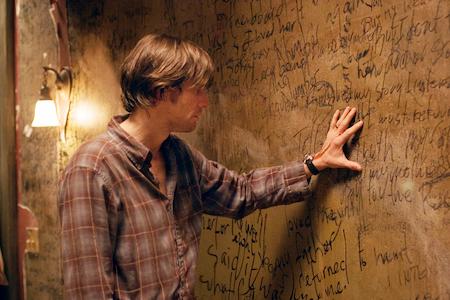
Jim Carrey in movie The Number 23 (2007) (source: imdb.com)
From Renaissance manuscripts to TikTok readings, numerology’s journey reveals humanity’s unshakable belief in numbers as mirrors of the soul and the universe. As it adapts to new technologies and worldviews, its core promise endures: that within the silent language of digits lies a map to meaning - personal, cosmic, and eternally unfolding.
For deeper exploration:
- "Numerology or What Pythagoras Wrought" by Underwood Dudley - A critical yet engaging exploration of numerology’s origins, tracing its roots from Pythagoras to modern-day practices. It examines how number mysticism evolved into numerology and critiques its cultural impact.
- "The Secret Science of Numerology" by Shirley Blackwell Lawrence - Explores the ancient foundations of numerology, linking it to Pythagorean philosophy, Hebrew gematria, and early Christian mysticism. It also discusses the scientific and esoteric theories behind number symbolism.
- "Numerology and the Divine Triangle" by Faith Javane & Dusty Bunker - Combines historical analysis with practical numerology, covering Pythagorean, Chaldean, and Kabbalistic systems. It highlights how ancient cultures (e.g., Babylonians, Egyptians) used numbers symbolically.
- "Cheiro’s Book of Numbers" by Cheiro - A classic text by the famed occultist, detailing the historical use of numerology in divination, including references to biblical numerology and ancient Greek isopsephy.
- "The Kabala of Numbers" by Sepharial (early 20th century) - Focuses on the fusion of Kabbalistic numerology with Western esotericism, tracing its influence on medieval mystics and Renaissance scholars like Agrippa.
- "The Complete Book of Numerology" by David A. Phillips - A comprehensive guide exploring how numbers influence personality, health, and destiny. It’s highly rated for its practical approach and depth.
- "Numerology and the Divine Triangle" by Faith Javane & Dusty Bunker - A classic that combines Pythagorean and Chaldean numerology, offering detailed interpretations of numbers in different life aspects.
- "Numerology: With Tantra, Ayurveda, and Astrology" by Harish Johari - Integrates numerology with Eastern spiritual practices, providing unique insights into psychic and destiny numbers.
- "The Secret Language of Birthdays" by Gary Goldschneider - Focuses on personology, blending numerology and astrology to analyze birthdays and personality traits.
- "Numerology: Key to Your Inner Self" by Hans Decoz & Tom Monte - A structured guide to understanding personal numbers and their influence on behavior and fate.
- "The Ultimate Guide to Numerology" by Tania Gabrielle - Focuses on manifesting abundance and decoding life events through numbers.
For deeper exploration, you might also consider "Your Soul Contract Decoded" by Nicolas David Ngan (for spiritual numerology) or "Numerology for Decoding Behavior" by Michael Brill (for psychological insights).